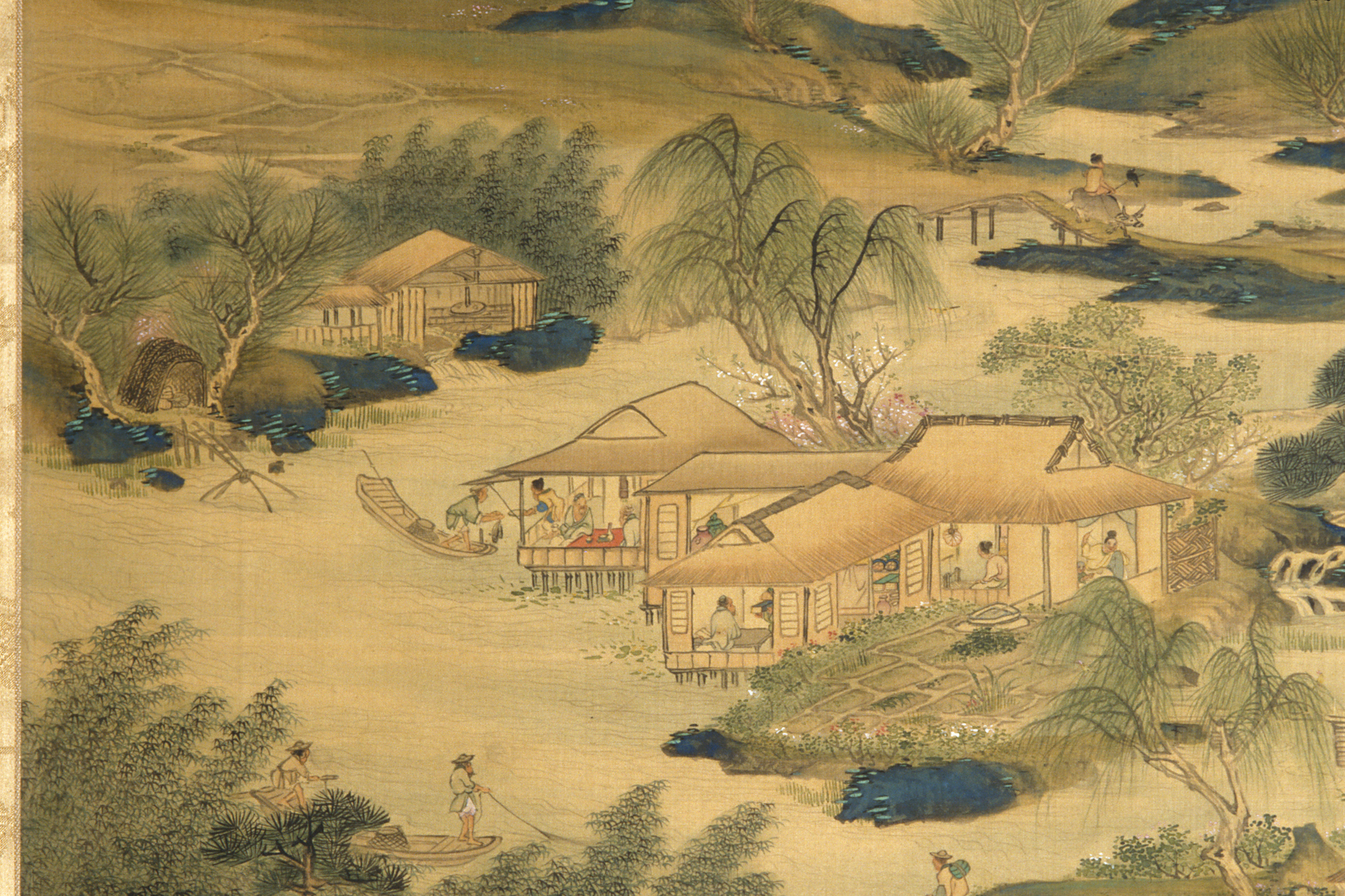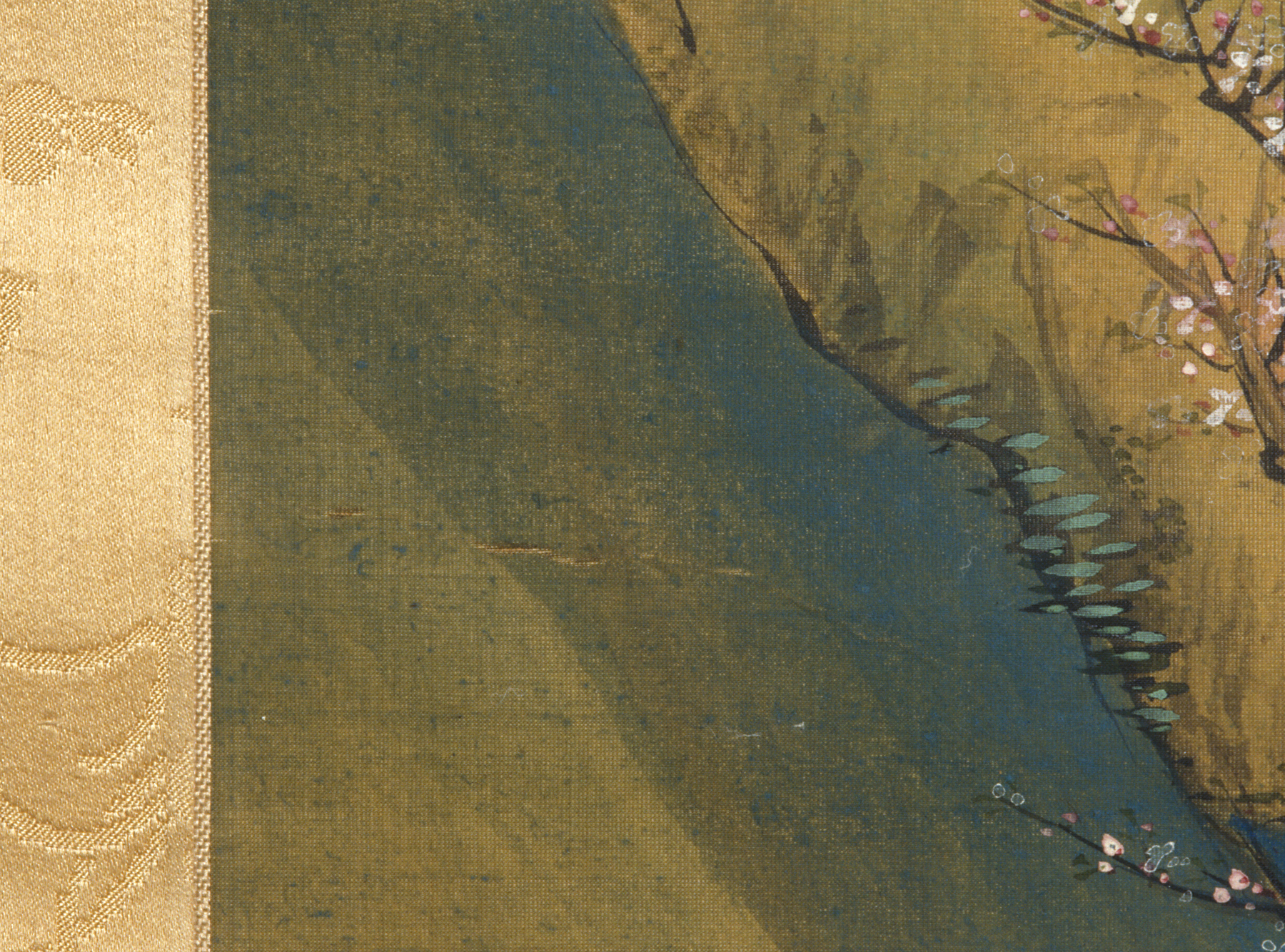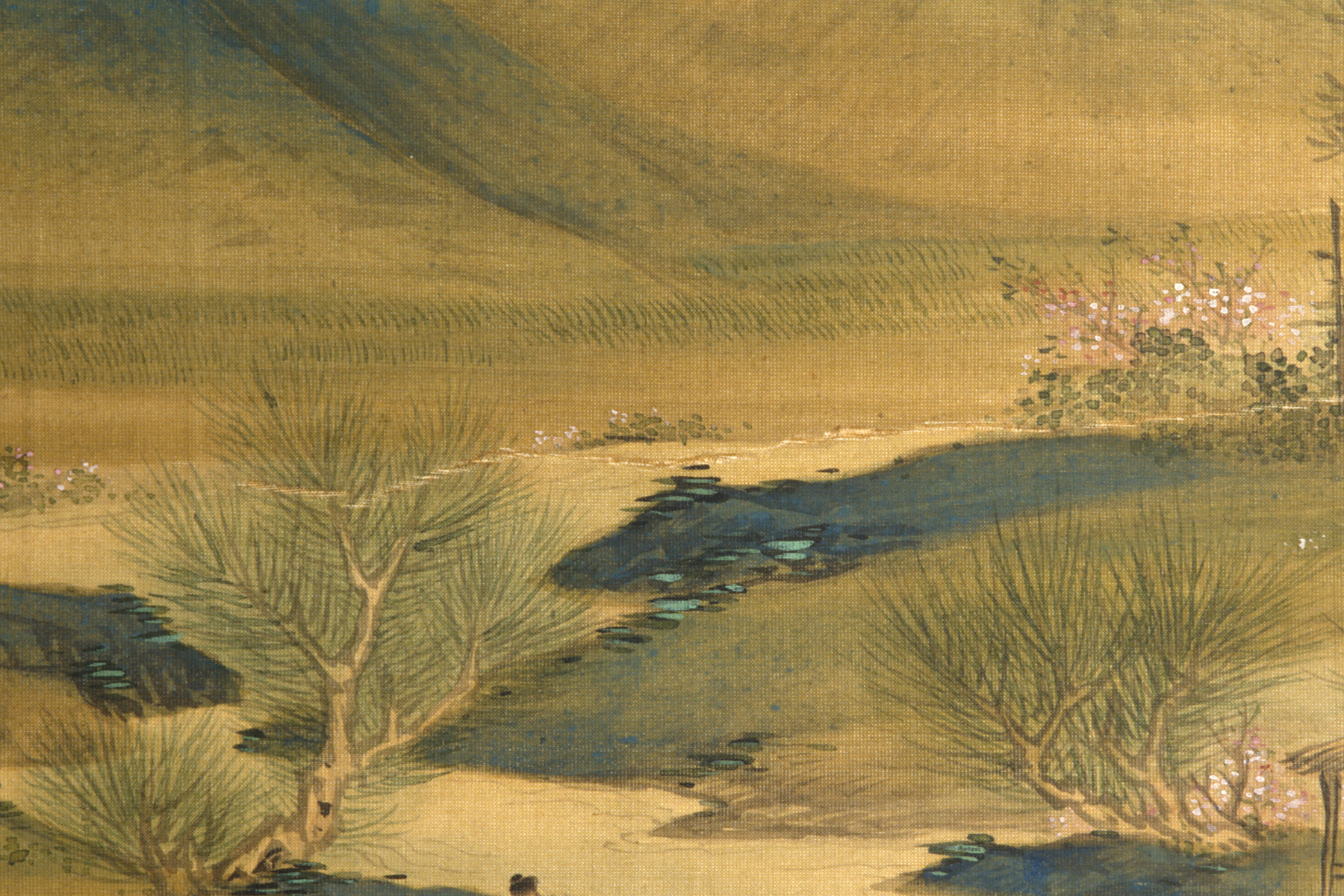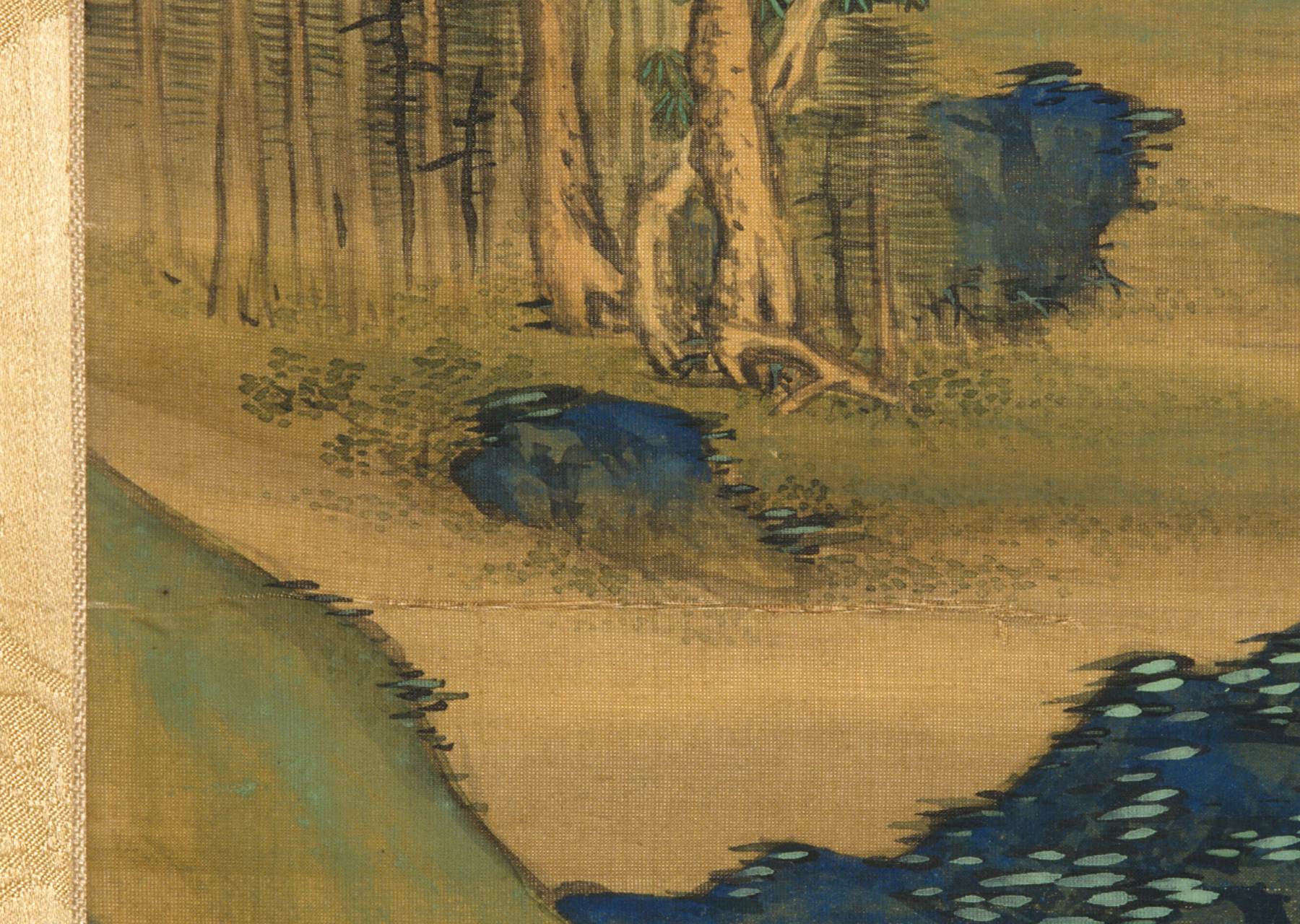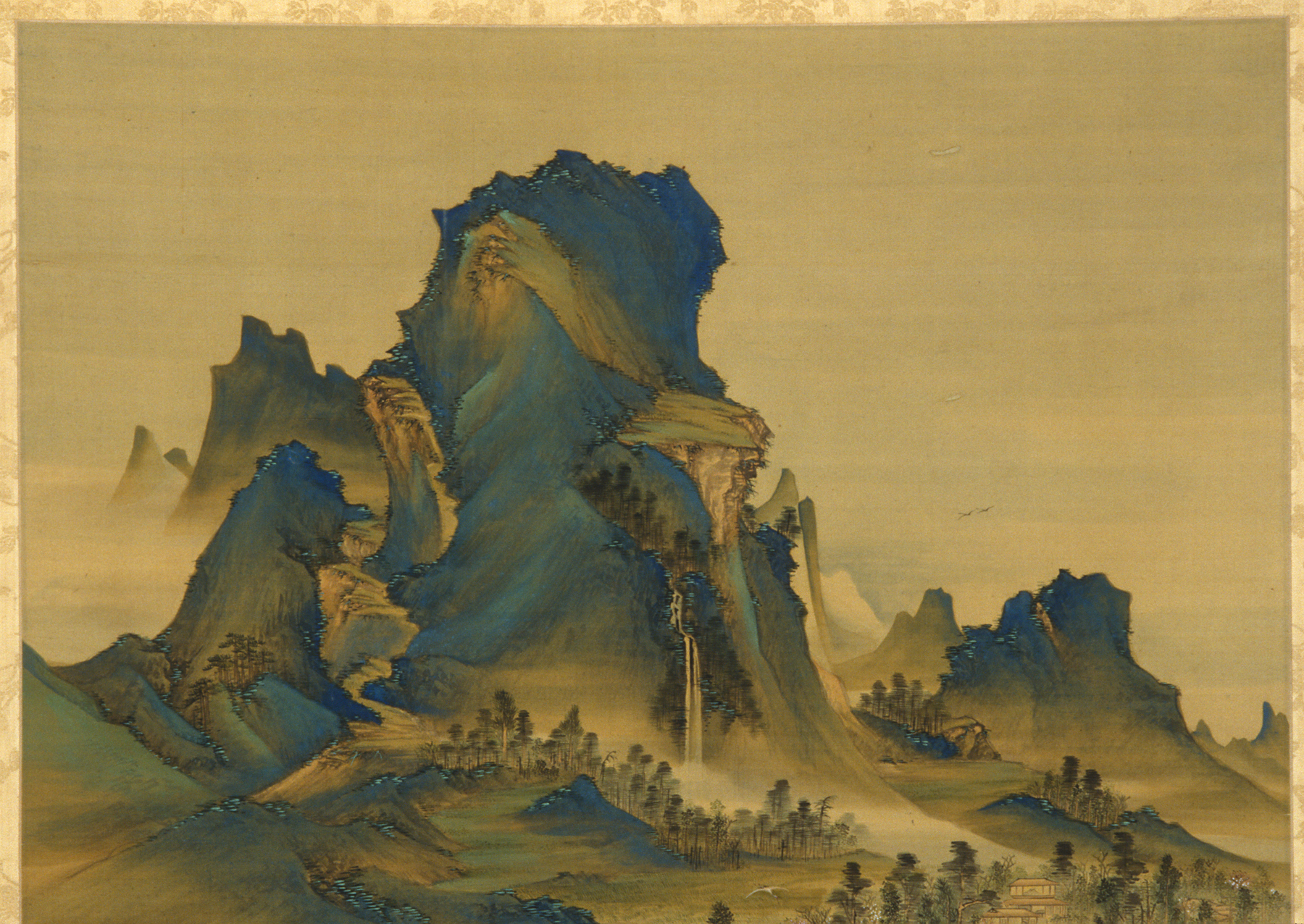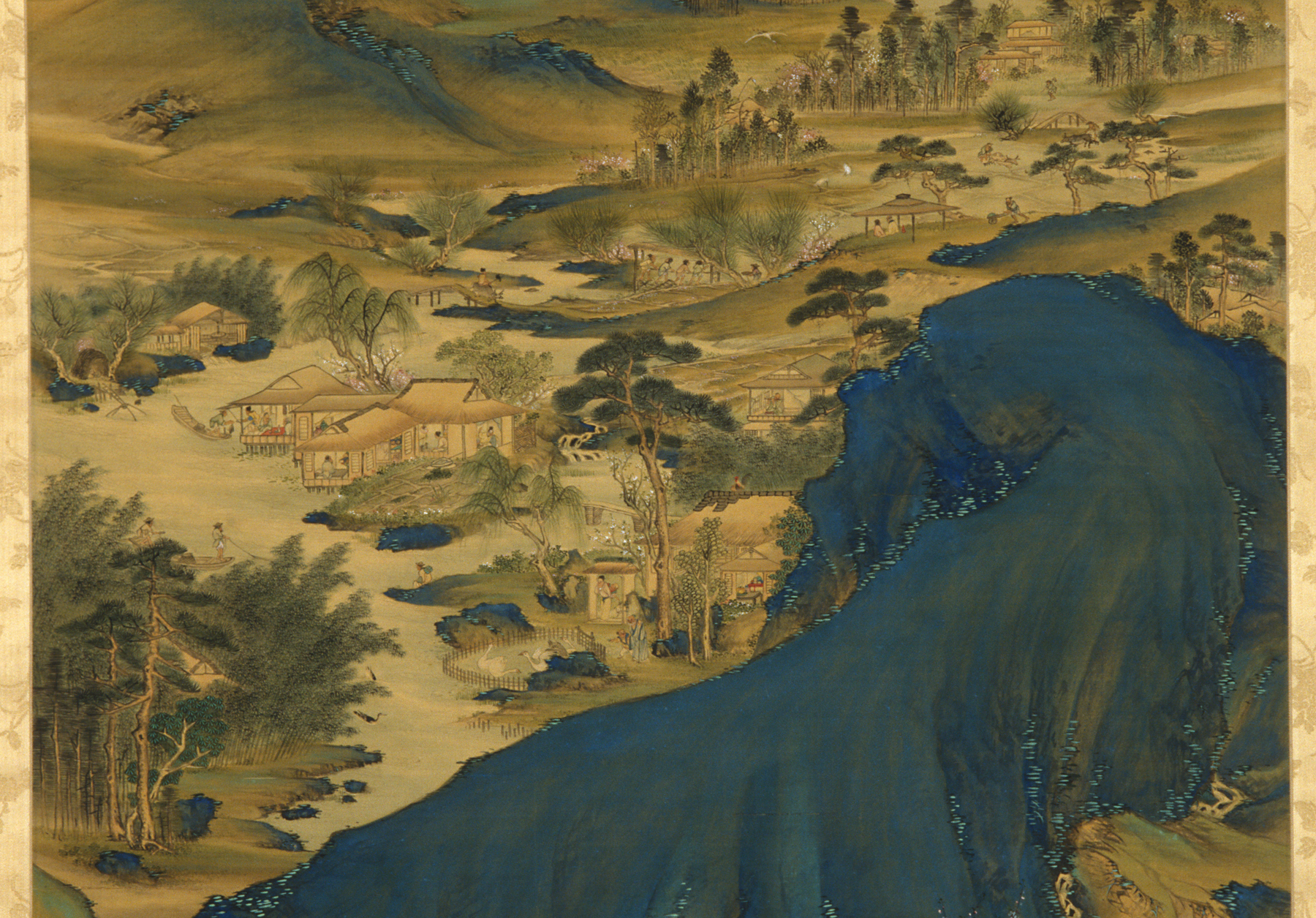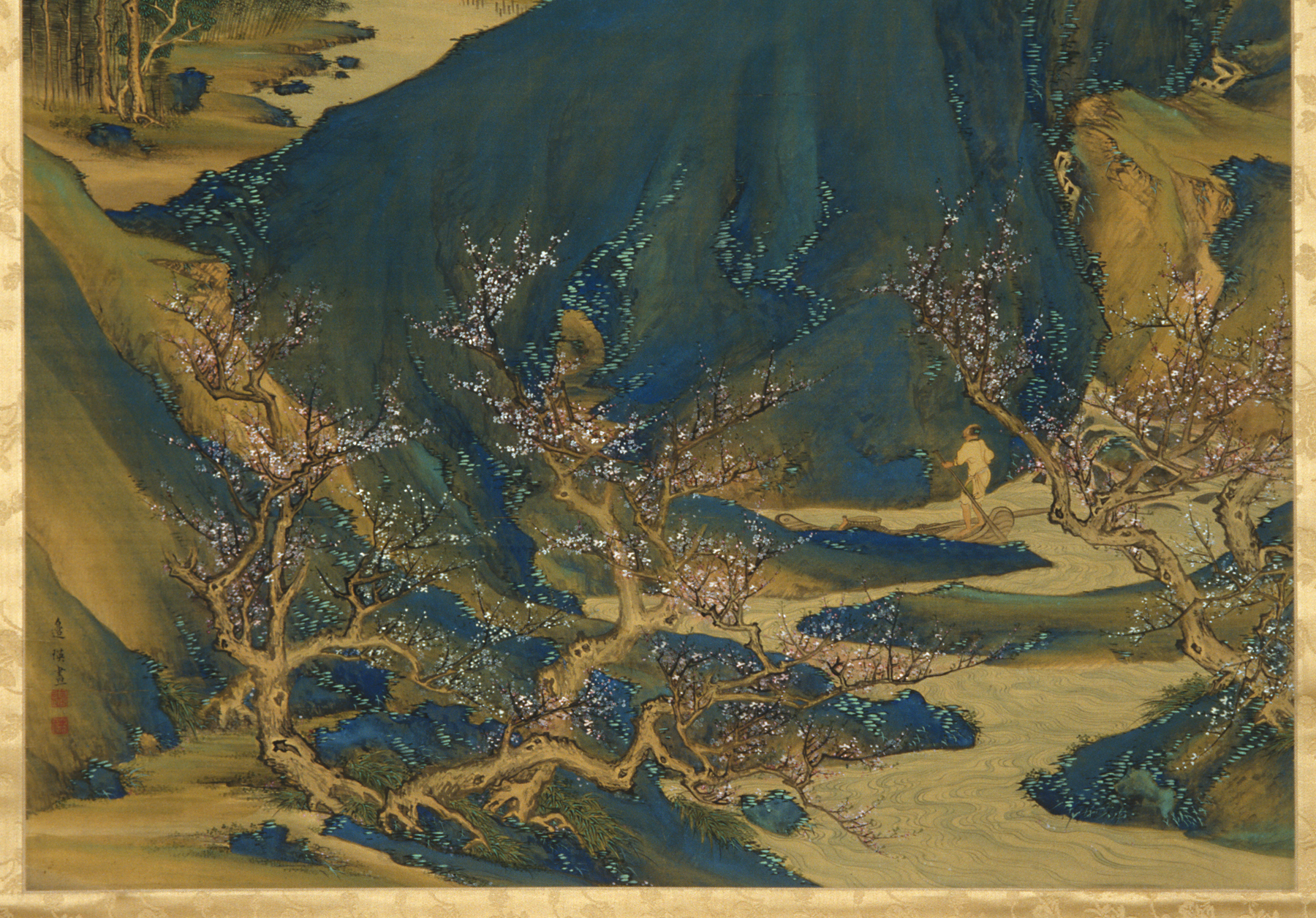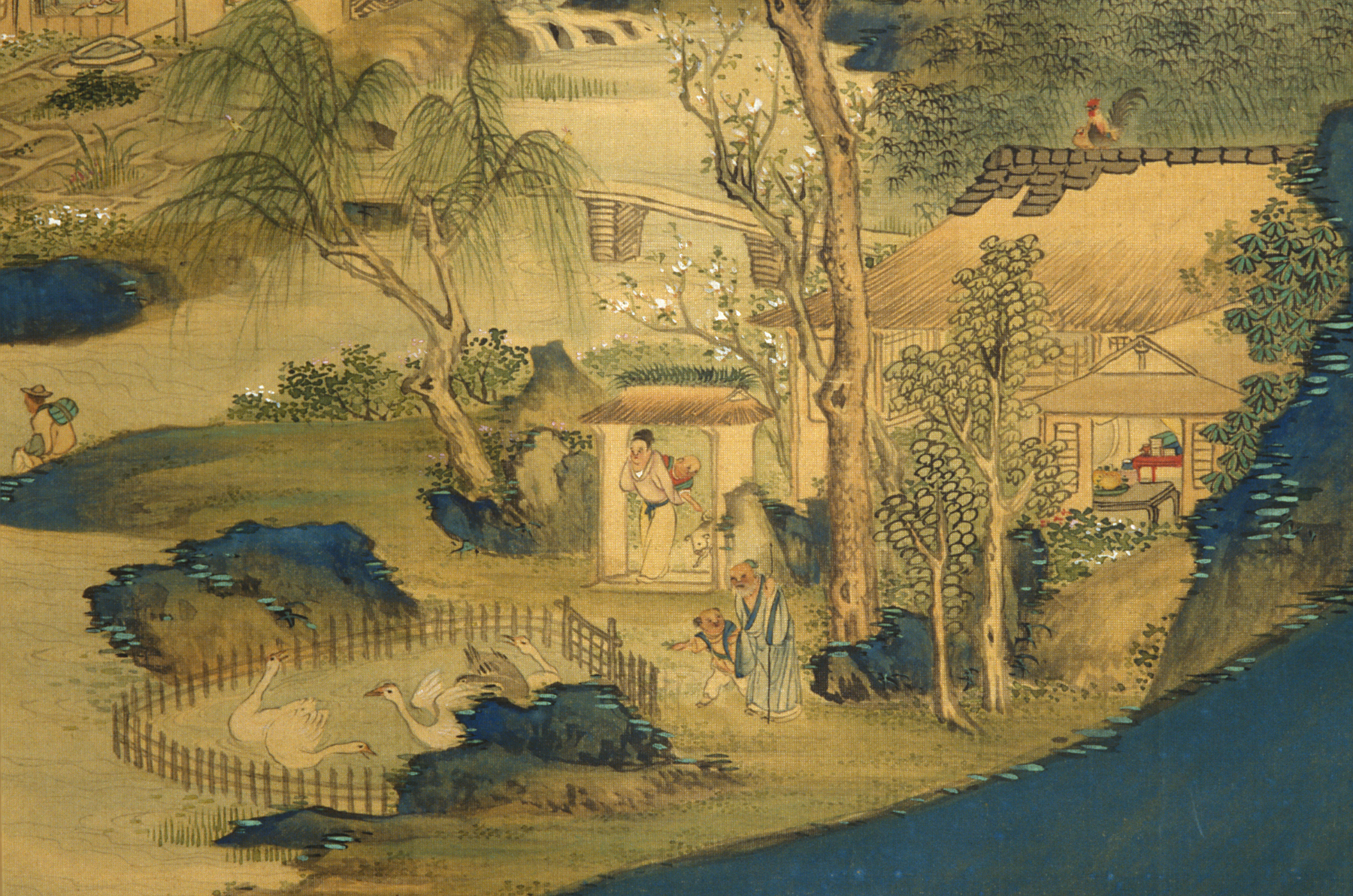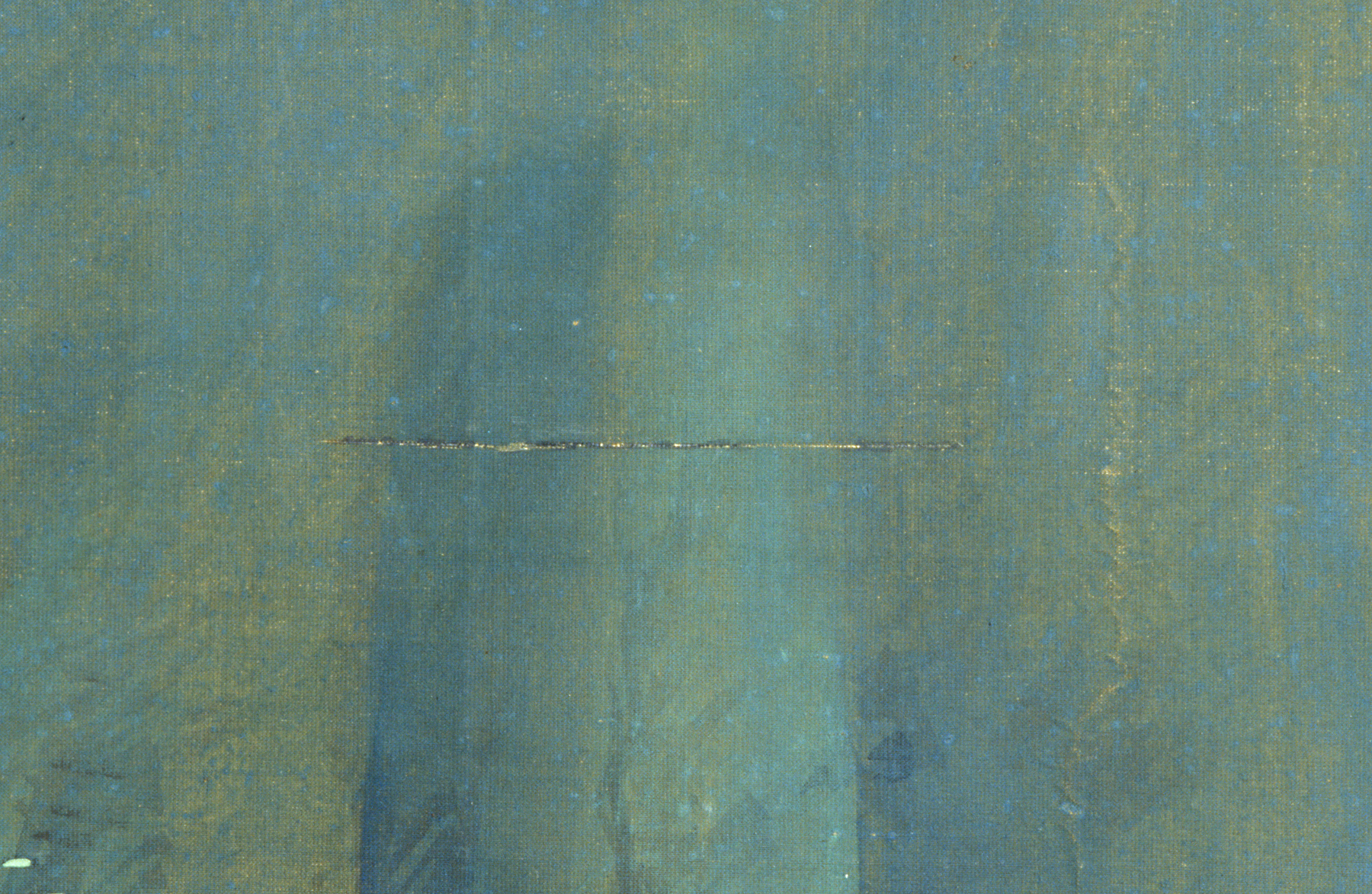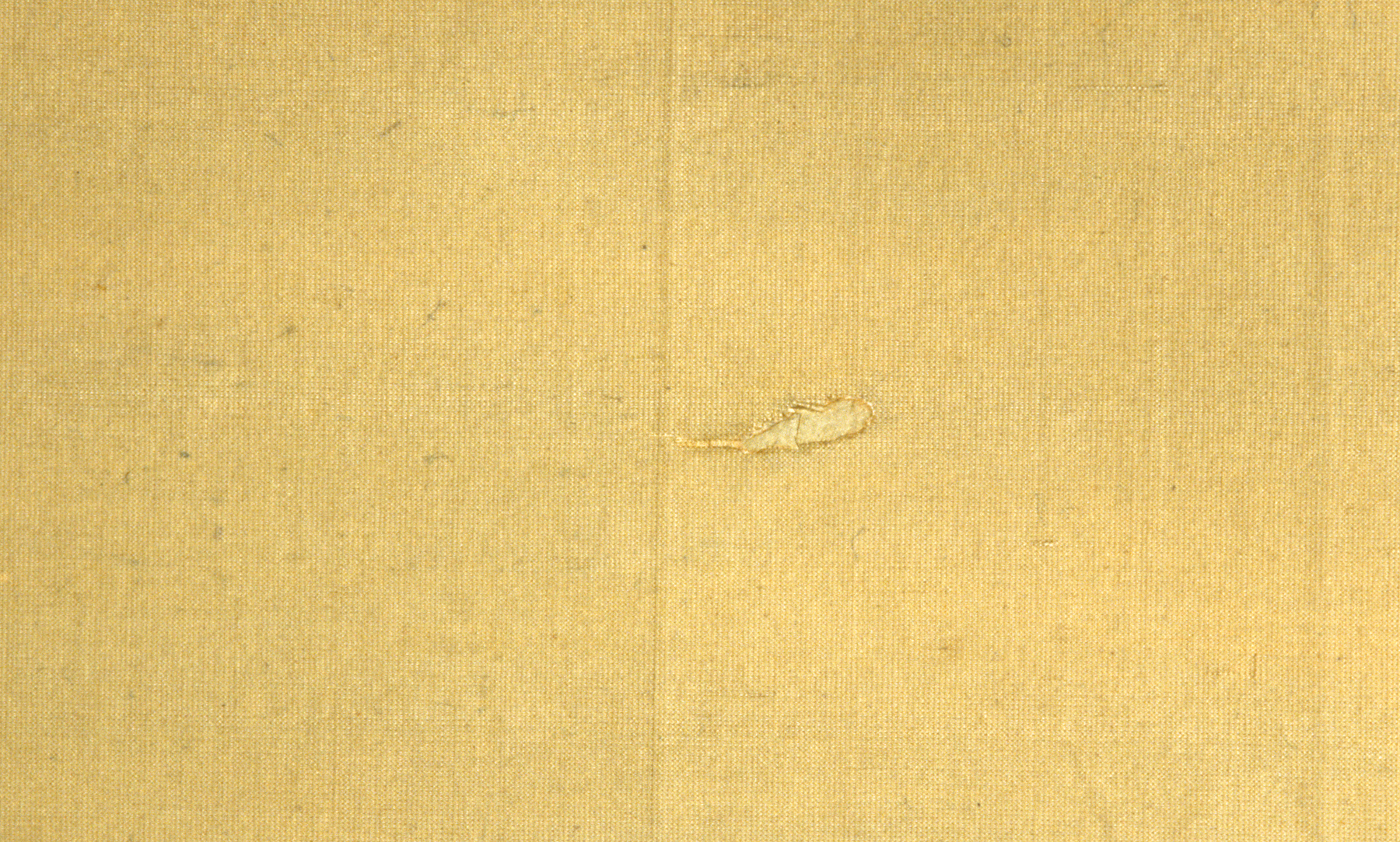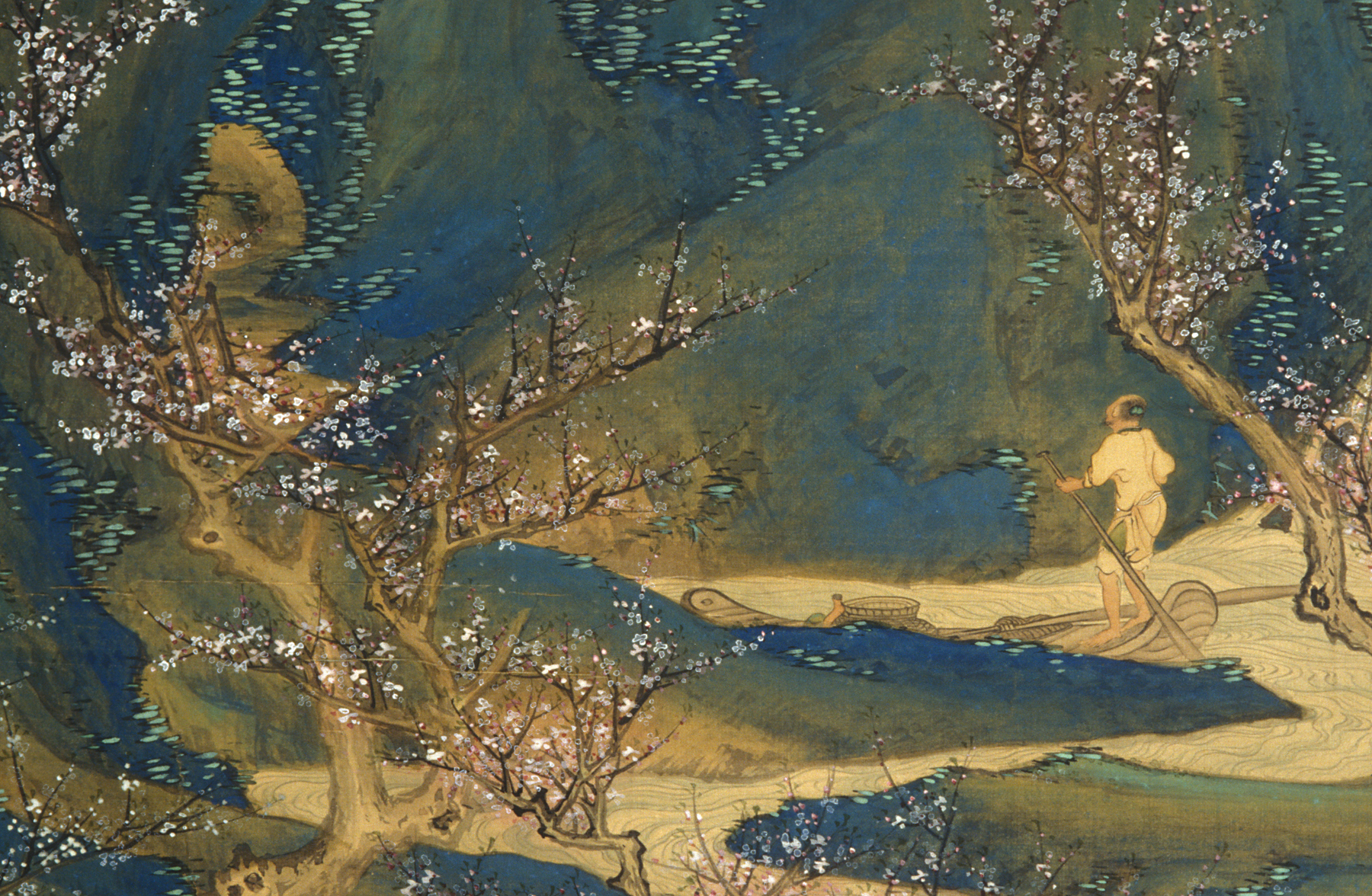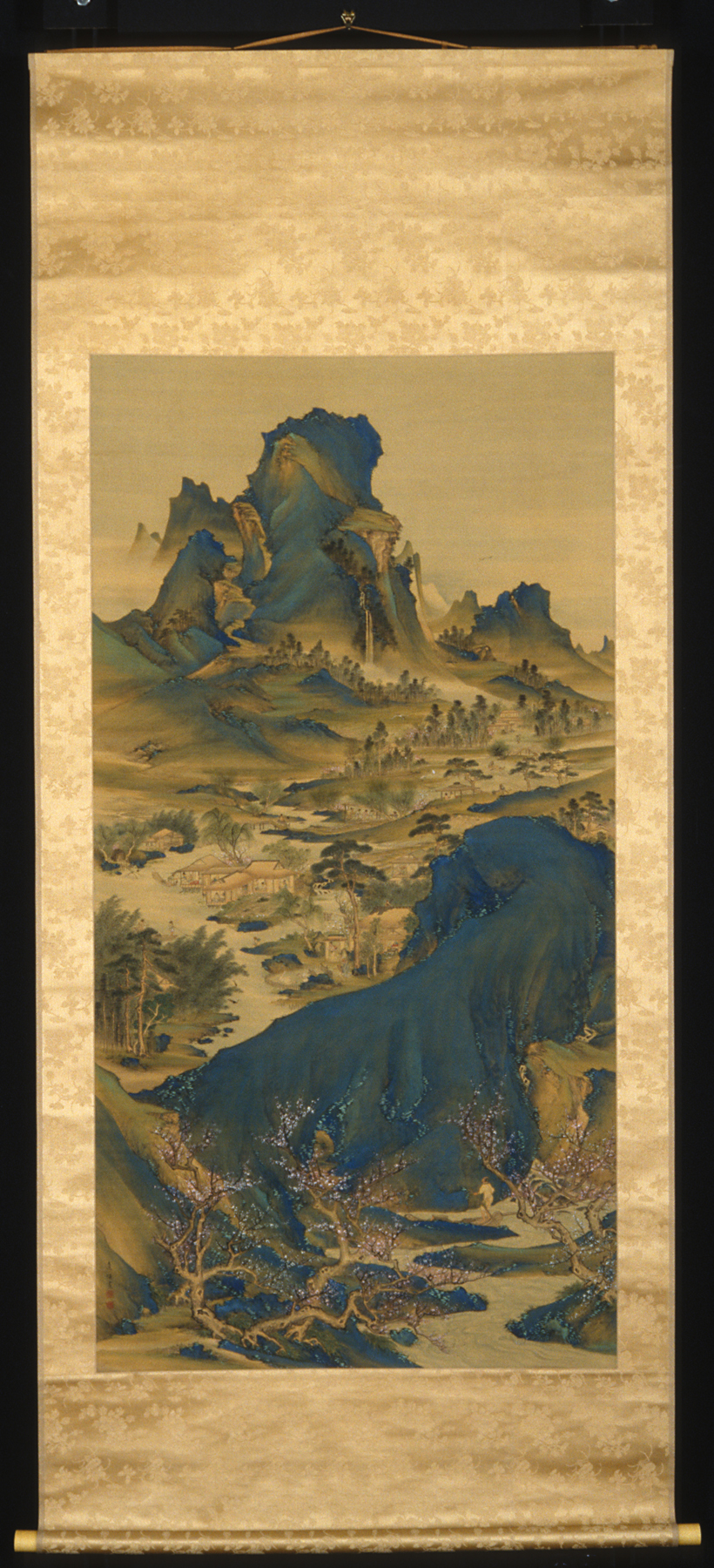武陵桃源 Buryô tôgen (Wuling’s Peach Blossom Spring), Watanabe Gentai
Artwork Overview
Watanabe Gentai, artist
1749–1822
武陵桃源 Buryô tôgen (Wuling’s Peach Blossom Spring),
late 1700s–early 1800s, Edo period (1600–1868)
Where object was made: Japan
Material/technique: inorganic pigment; silk
Dimensions:
Image Dimensions Height/Width (Height x Width): 155.2 x 79.4 cm
Image Dimensions Height/Width (Height x Width): 61 1/8 x 31 1/4 in
Sheet/Paper Dimensions (Height x Width): 228.6 x 97.8 cm
Sheet/Paper Dimensions (Height x Width): 90 x 38 1/2 in
Roller Dimensions (Width x Diameter): 104 cm
Roller Dimensions (Width x Diameter): 40 15/16 in
Image Dimensions Height/Width (Height x Width): 155.2 x 79.4 cm
Image Dimensions Height/Width (Height x Width): 61 1/8 x 31 1/4 in
Sheet/Paper Dimensions (Height x Width): 228.6 x 97.8 cm
Sheet/Paper Dimensions (Height x Width): 90 x 38 1/2 in
Roller Dimensions (Width x Diameter): 104 cm
Roller Dimensions (Width x Diameter): 40 15/16 in
Credit line: Museum purchase: R. Charles and Mary Margaret Clevenger Fund
Accession number: 1998.0707
Not on display
If you wish to reproduce this image, please submit an image request


